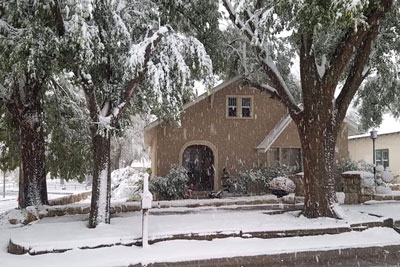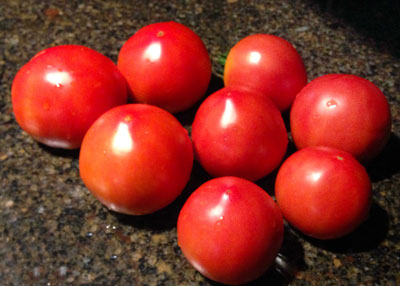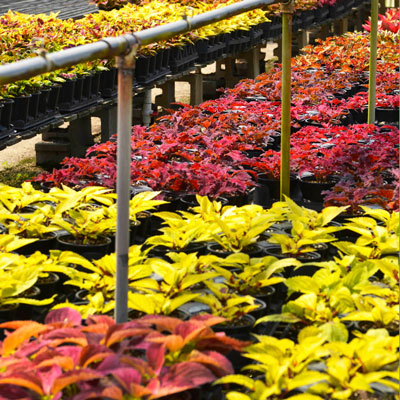Before the First Freeze…
I know it’s already been really cold with 4 to 6 inches of snow in the Panhandle, so this is old news for those of you who posted great photos like this to my Facebook page last week.

However, most of Texas hasn’t known the joy of that first freeze just yet. This first freeze is coming unusually early, and we’re hearing it may be the coldest one ever.
Things you need to get done…
With that in mind, here are the most critical things you’ll want to get done before the coldest weather rolls in. I’m just going to list them as bullets, quick and short.
• Make the decision on your tomatoes. If temperatures are going to be near or below freezing, harvest all fruit that are ripe or that could ripen indoors. Simple test: Cut through a sample fruit of average size with a sharp knife. If the knife moves the seeds out of its way, that fruit would have ripened. Pick all like it and lay them out on newspapers or towels on a bright countertop. They will ripen with no loss of flavor or nutritional value. If the knife cuts through the seeds, that fruit should be used in making relish.

If your area’s temperatures are expected to drop only into the high 30’s you can probably save your plants by covering them completely with lightweight frost cloth. It’s a specialty agricultural product made for that express purpose. Be sure to bring it down clear to the ground and weight it down to keep strong winds from pulling it free. Leave it in place until temperatures rise above 40F. Note: Do not use plastic sheet film. It makes the problems worse. Frost cloth is very useful in protecting other flowers and vegetables as well. It gains you as much as 6 or 7 degrees of protection from cold as well as sheltering the plants from the wind.
• Move patio plants and hanging baskets into the house or greenhouse. The garage is not a good place. (See related story this issue.)

• Take last-minute cuttings from any plants you want to propagate.
• If you have a greenhouse, be sure your heat source is working properly and have a backup plan just in case.
• Allow tops of cannas, bananas, iris, St. Joseph’s lilies (“hardy amaryllis”), daylilies and other perennials to be killed back by the first freeze. Trim that old foliage away a few days later, once it has dried and shriveled. Do not cut green growth off any perennial plant. Wait until it turns yellow and brown on its own.
• Wait to prune asparagus stalks back until after the plants have turned yellow following a freeze. If you’re in South Texas and if they never turn yellow, prune them significantly around December 1. Their roots must go dormant if you want them to produce vigorous new canes in the spring.
• If you missed out on the rains over the past week, water your plants deeply.
• Disconnect all hoses from faucets.
• Drain all sprinklers.
• Check automatic sprinklers to be sure they won’t run when temperatures are below freezing. You’re likely to be fined, plus you’ll break your shrubs’ branches from the weight of the ice.
• Bring hummingbird feeders in. Clean and prepare them for winter storage. Some experts say it’s OK to leave one feeder out for another few weeks in the southern two-thirds of Texas to help stragglers and uncommon species of hummingbirds that might be migrating through your area.
